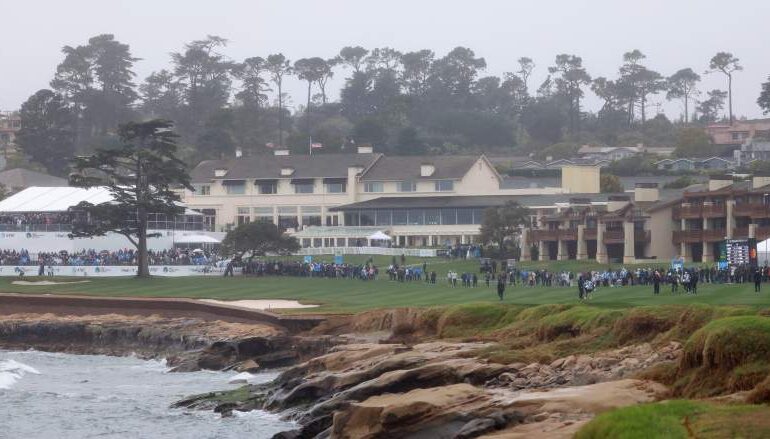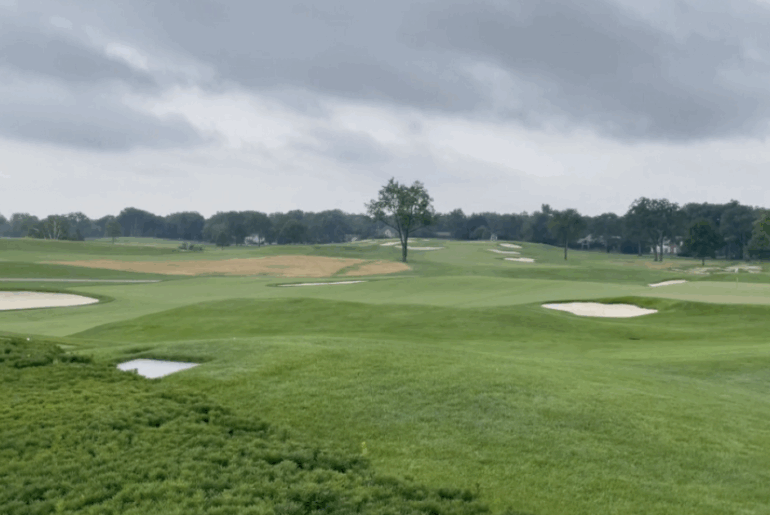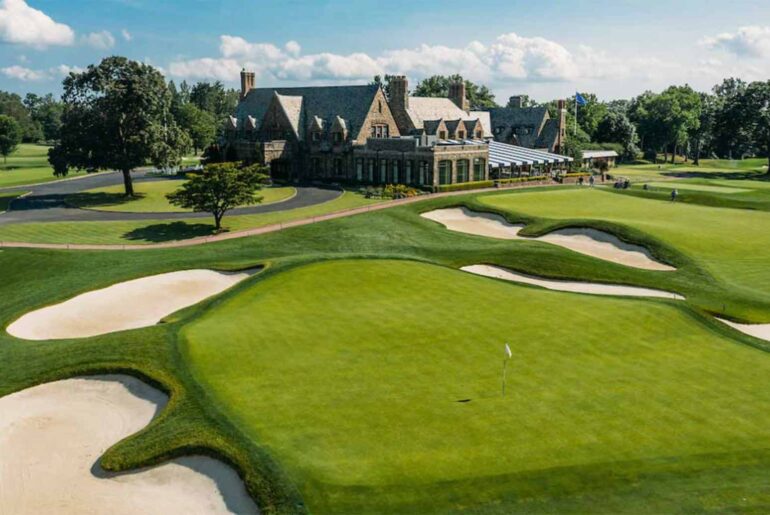 The Links Course was the first Wild Dunes track to reopen after Hurricane Hugo struck in 1989.
The Links Course was the first Wild Dunes track to reopen after Hurricane Hugo struck in 1989.
ISLE OF PALMS, SOUTH CAROLINA | When Tom Fazio created the Links Course at Wild Dunes resort just north of Charleston more than 40 years ago, it was a revelation.
Given the freedom to lay a golf course on land that adjoins the Atlantic Ocean long before the homes and villas began rising from the sandy soil, Fazio’s first solo design created a layout that helped fuel his emergence as one of the game’s most influential and accomplished course designers.
Winding through the Lowcountry live oaks and tumbling over natural dunes before spilling out to the edge of the Atlantic where the two finishing holes played alongside the sea oats, the Links Course was immediately captivating. The 17th and 18th holes were recognized in a coffee table book featuring the 500 greatest holes in the world, the smell of salt air and the ocean breeze practically coming off the pages.
“Wild Dunes was a seminal project for Tom Fazio and Fazio Design,” said Bryan Bowers, who has worked with Fazio as a lead designer for 27 years.

Less than a decade later as Wild Dunes expanded and became one of the most popular vacation destinations along South Carolina’s famous coastline, Fazio and his group built the Harbor Course, a second 18 holes that helped meet the need for tee times while providing housing sites with broad marsh views and access to the Intracoastal Waterway.
It was an admittedly tight fit, squeezing 18 holes onto a slender piece of land already crowded with vacation homes. And when Hurricane Hugo devastated the area in 1989, both the Links Course and the Harbor Course were virtually destroyed.
The Links Course reopened first, and it was two years (1991) before the Harbor Course was up and running again. Now, 34 years later, the Harbor Course is new again, having just completed a $9-million renovation project that not only refreshed the layout, but represents another step in the continuing elevation of the 1,600-acre resort that sits just 30 minutes from Charleston’s many charms.
“When courses were being built in the ’80s by Pete Dye, Tom Fazio and Jack Nicklaus, there were more contours and moguls used. Today, those areas are wider and softer.” – Bryan Bowers
With water or marsh coming into play on 17 of 18 holes, the Harbor Course plays just 6,359 yards from the back tees and features six par-3 holes in the par-70 layout. Don’t be deceived by the relatively short yardage. The combination of ocean breezes, some sharply defined corridors and a handful of strong par-4 holes make the Harbor Course a proper test for low-handicap players.
Bowers and the Fazio group widened fairways where they could, including on a three-hole stretch midway through the round that runs alongside the Intracoastal Waterway on what once was the island’s landing strip. Downwind, holes 10, 11 and 12 are tempting but into the wind or dealing with a crosswind changes their difficulty instantly.
The par-4 17th hole, which begins with a tee shot hit diagonally across an expansive marsh leading to an approach shot with the same marsh hugging the left side of the green, is as stout a hole as there is in South Carolina’s golf-rich Lowcountry.
And, the par-4 18th hole, a slightly smaller version of the 17th, bookends a finish that is as demanding as it is beautiful.
It’s a golf course that has just 60 acres of irrigated turf, barely half of what many courses have, and there are plenty of bunkers and waste areas that demand attention.
“Because of the land and the geometry of the space, we tried to create as much playing space as we could,” Bowers said. “When courses were being built in the ’80s by Pete Dye, Tom Fazio and Jack Nicklaus, there were more contours and moguls used. Today, those areas are wider and softer.”
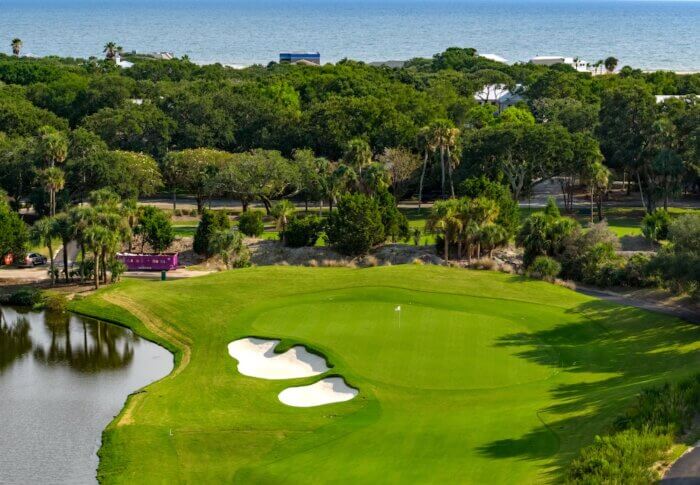
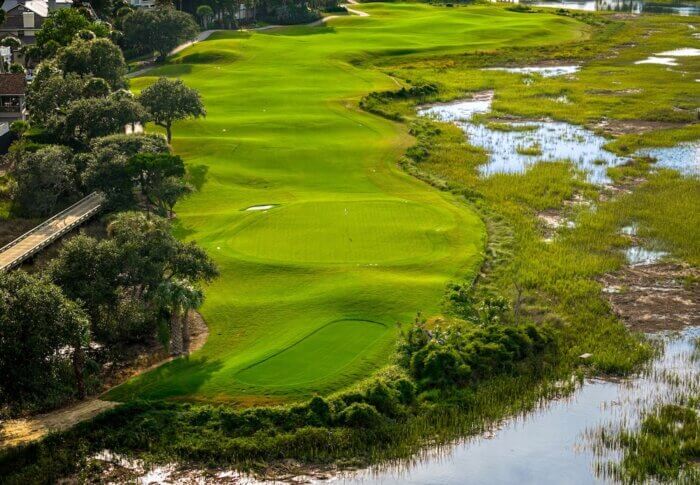
Water or marsh comes into play on 17 of 18 holes on the Harbor Course.
While rebuilding all 18 greens, more contouring was created and the overall size of the new Tifeagle putting surfaces nearly doubled, going from 60,000 square feet to more than 110,000 square feet, dramatically enhancing the playability of the Harbor Course.
Throw in new irrigation, the relocation of some cart paths and a handful of design tweaks that made some greens more approachable and the change is both dramatic and elevating.
“Like any building or golf course, it needed to be modernized,” said Jeff Minton, director of golf and sports at Wild Dunes. “We were spending a lot of time repairing our irrigation system and the greens had become contaminated. It was definitely something that needed to happen.”
Both the Links and the Harbor courses blend comfortably into the resort, which has an upscale feel without losing its beach vibe. Unlike some spots that sell sparkle, Wild Dunes succeeds by selling a feeling along with its amenities.
 The Links Course was Tom Fazio’s first solo design more than 40 years ago.
The Links Course was Tom Fazio’s first solo design more than 40 years ago.
It’s a place for bike rides, beach walks and just being there to hear the palmetto palms rustle in the breeze and the sound of waves breaking.
The 93-room Boardwalk Inn has a AAA Three Diamond rating while the Sweetgrass Inn, which opened in 2021, features a spa, a rooftop bar overlooking the resort and celebrates the area’s culture.
There is no shortage of excellent dining options, including the Oystercatcher Bar & Restaurant, which features daily oysters on the half shell served four ways.
If you feel the tug of an afternoon or evening in Charleston, it’s just a short ride away.
But once you’re at Wild Dunes, it’s difficult to leave.
Photos Courtesy Wild Dunes
© 2025 Global Golf Post LLC


